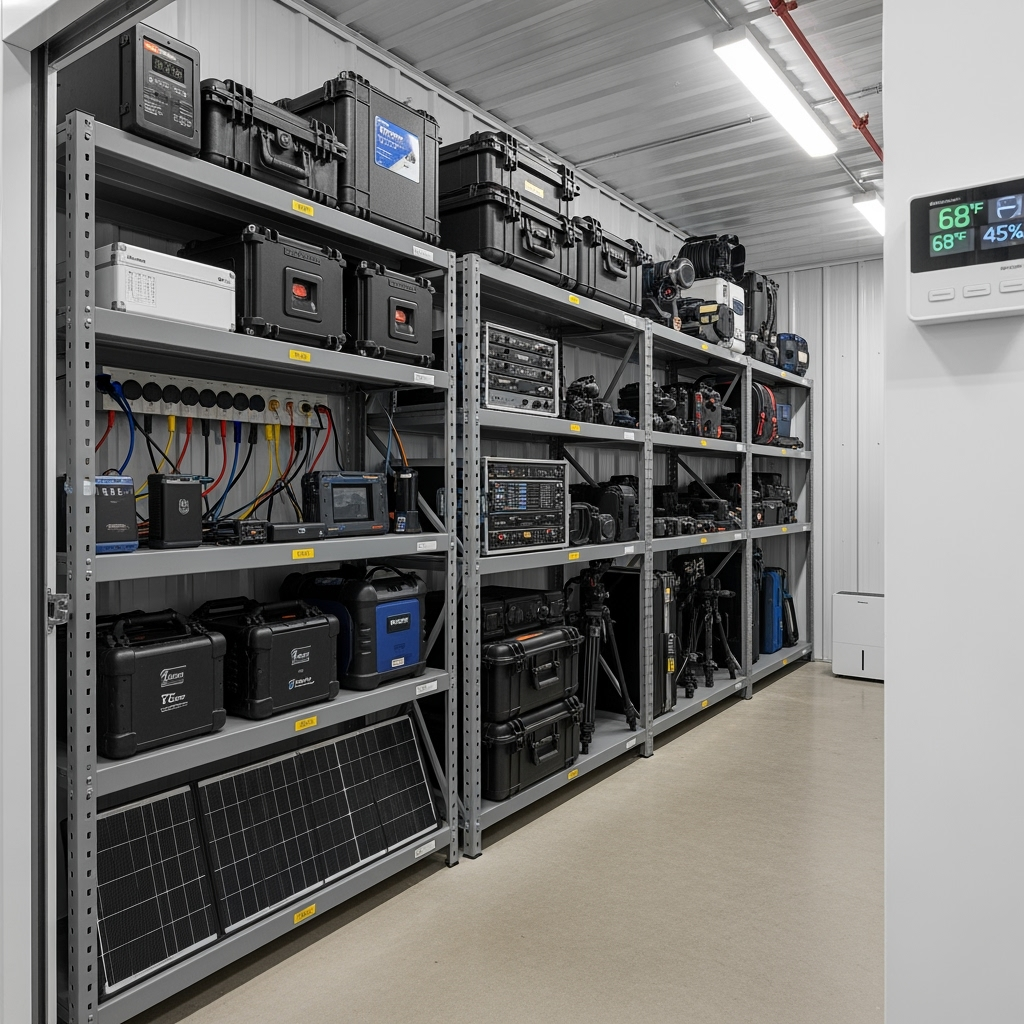Setting Up Your Power-Protected Storage Strategy for Remote Work Success

For remote workers, power reliability isn’t just about keeping the lights on—it’s about maintaining professional continuity and protecting valuable equipment. This comprehensive guide will help you develop a smart storage strategy that ensures your work equipment stays protected and ready for action, no matter what power challenges arise.
Why Power-Smart Storage Matters for Remote Workers
As remote work becomes increasingly prevalent, the need to protect sensitive electronics and maintain reliable access to work equipment has never been more critical. Power disruptions can lead to:
- Damaged electronic equipment from sudden power losses
- Missed deadlines and communication breakdowns
- Potential data loss and hardware failures
- Increased stress and reduced productivity
Essential Components of a Power-Smart Storage Solution

1. Climate-Controlled Storage Basics
The foundation of protecting your remote work equipment starts with climate-controlled storage. This ensures your valuable electronics are protected from:
- Temperature fluctuations that can damage sensitive components
- Humidity levels that could cause corrosion
- Static electricity buildup that poses risks to electronics
- Dust and debris that can affect equipment performance
2. Power Protection Equipment
Essential power protection gear to store and maintain includes:
- Uninterruptible Power Supply (UPS) systems
- Surge protectors and voltage regulators
- Battery backup systems
- Power conditioning equipment
Creating Your Power-Smart Storage System
Organizing Your Storage Space
Follow these steps to create an efficient power-smart storage system:
- Designate specific zones for different types of equipment
- Create a power equipment maintenance schedule
- Implement proper labeling and inventory systems
- Establish clear access protocols for emergency situations
Strategic Equipment Rotation
Develop a rotation system that ensures:
- Regular testing of backup equipment
- Battery maintenance and replacement schedules
- Updated inventory of power protection gear
- Proper storage of seasonal or occasionally used equipment
Best Practices for Long-Term Equipment Protection
Regular Maintenance Checks
Implement these maintenance routines:
- Monthly testing of backup power systems
- Quarterly inspection of storage conditions
- Semi-annual review of equipment performance
- Annual updates to your power protection strategy
Emergency Preparedness
Ensure your storage solution includes:
- Clear emergency access procedures
- Backup equipment ready for immediate deployment
- Updated contact information for support services
- Documented recovery procedures
Making the Most of Your Climate-Controlled Storage
Temperature and Humidity Control
Maintain optimal storage conditions:
- Monitor temperature ranges (typically 68-72°F)
- Control humidity levels (45-55% relative humidity)
- Implement proper air circulation
- Regular environmental monitoring
Conclusion: Ensuring Continuous Remote Work Success
A power-smart storage strategy is essential for remote workers who need to maintain professional continuity and protect valuable equipment. By implementing these guidelines and regularly reviewing your storage system, you can create a reliable foundation for your remote work success.
Remember that proper storage isn’t just about protecting your equipment—it’s about ensuring your ability to work efficiently and professionally, regardless of power-related challenges. Take the time to develop and maintain your power-smart storage solution, and enjoy the peace of mind that comes with knowing your remote work equipment is well-protected.










Leave a Reply